Starting your surface crochet
Step 1
First, you need a piece of crochet fabric to practise with. Surface crochet works best on a piece of double crochet fabric, which is dense and the stitches form a natural grid of holes for you to work into. Then you need to attach your yarn to the back of the fabric – you can do this with a knot or a slipknot and weave in the tail end afterwards. Make sure you attach the yarn at the point where you want to begin your surface crochet design.
Try this method to attach the yarn: make a slipknot and place it on your hook. Insert the hook into part of a stitch on the reverse of the fabric…

Step 2
…Yrh and pull the yarn through the stitch and the slipknot.
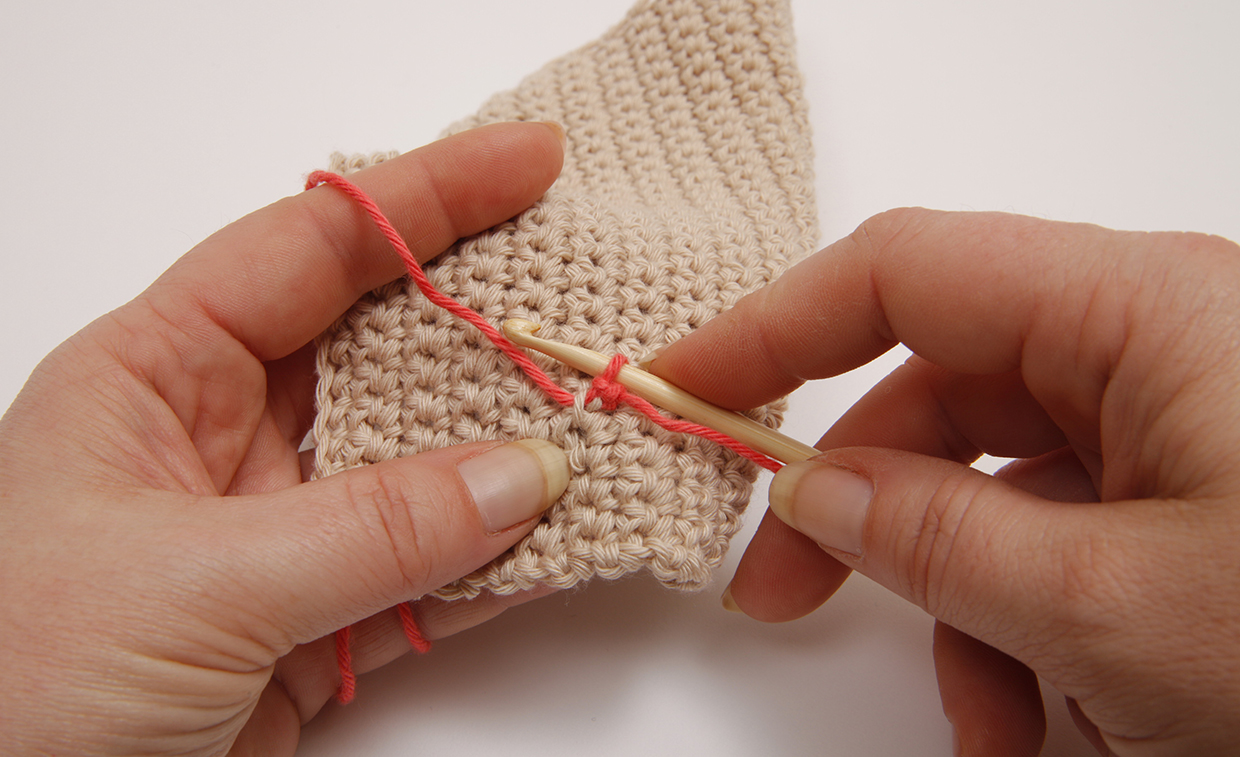
Tighten the slipknot. You will have attached the yarn to the reverse of your fabric.
Alternatively, if you’re knotting the yarn, make sure you create a working loop for your hook on the back of the work.
How to surface crochet lines
Step 1
Once the yarn is attached, you can remove the hook from the working loop at the back, bring the hook to the front of the fabric and insert it where you want to work your first surface crochet stitch. Use the hook to pull the working loop through to the front of the fabric.

Step 2
Now you can start making slip stitches on the fabric. To do this, *insert the hook into the next hole in your fabric, from front to back, and work yrh. Pull a loop of yarn through to the front of your fabric (2 loops on hook).

Step 3
Draw the new loop through the first loop (first slip stitch formed) . Make sure this first surface crochet slip stitch lies neat and flat against the surface of the fabric.

Step 4
Repeat from * to create more slip stitches in a line.

Step 5
When you’ve finished your line, cut your yarn at the back of your fabric, leaving a tail around 15cm long. Thread the tail onto a tapestry needle and bring the needle and yarn up to the front of the fabric, at the point where you want your last stitch to end. Pass the needle and yarn through the final loop and remove the hook.
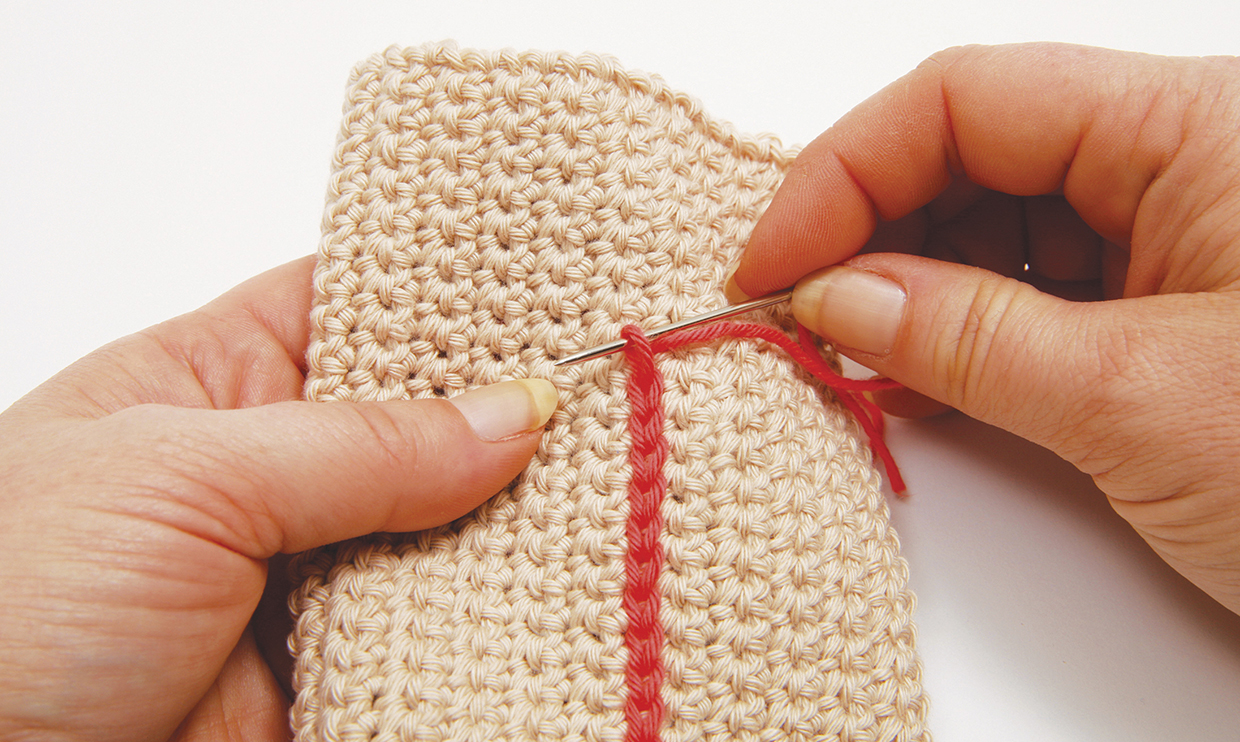
Step 6
Then insert the needle back down into the fabric to take the yarn back down at the same point as it came out. This forms a small loop that will hold your final slip stitch in place.
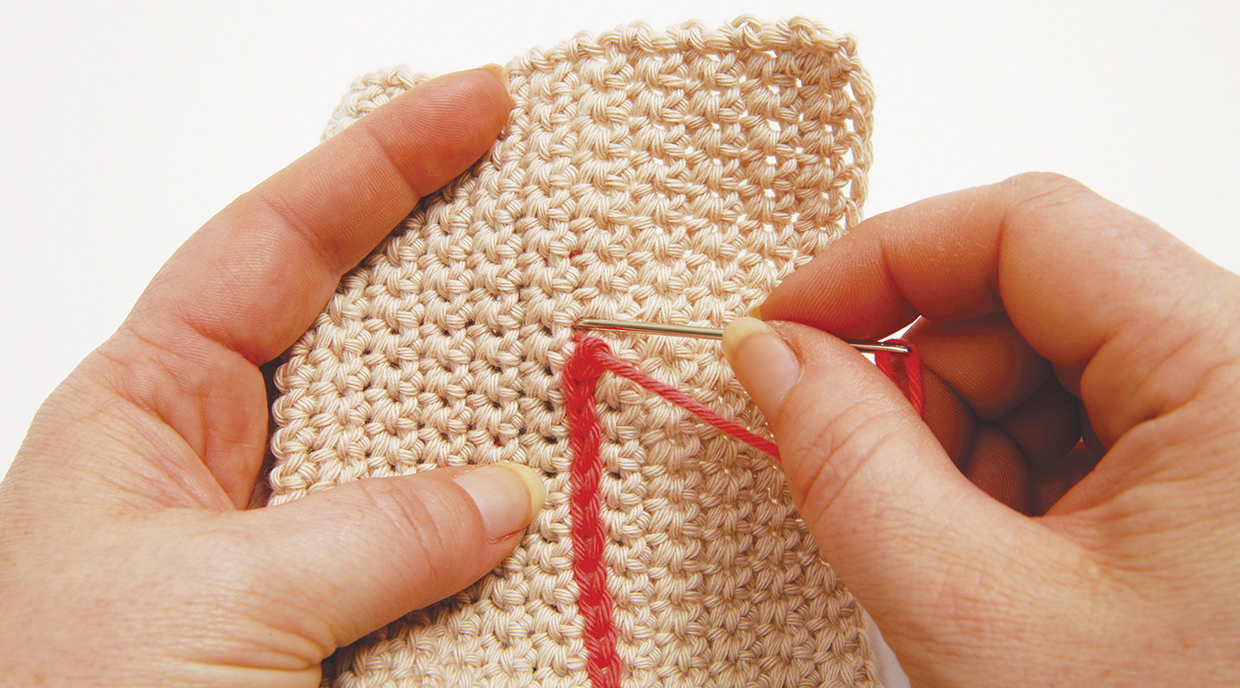
Step 7
Pull gently on the yarn to make sure the final loop lies flat . Securely and neatly weave in this tail end, and the starting tail, on the back of your fabric.
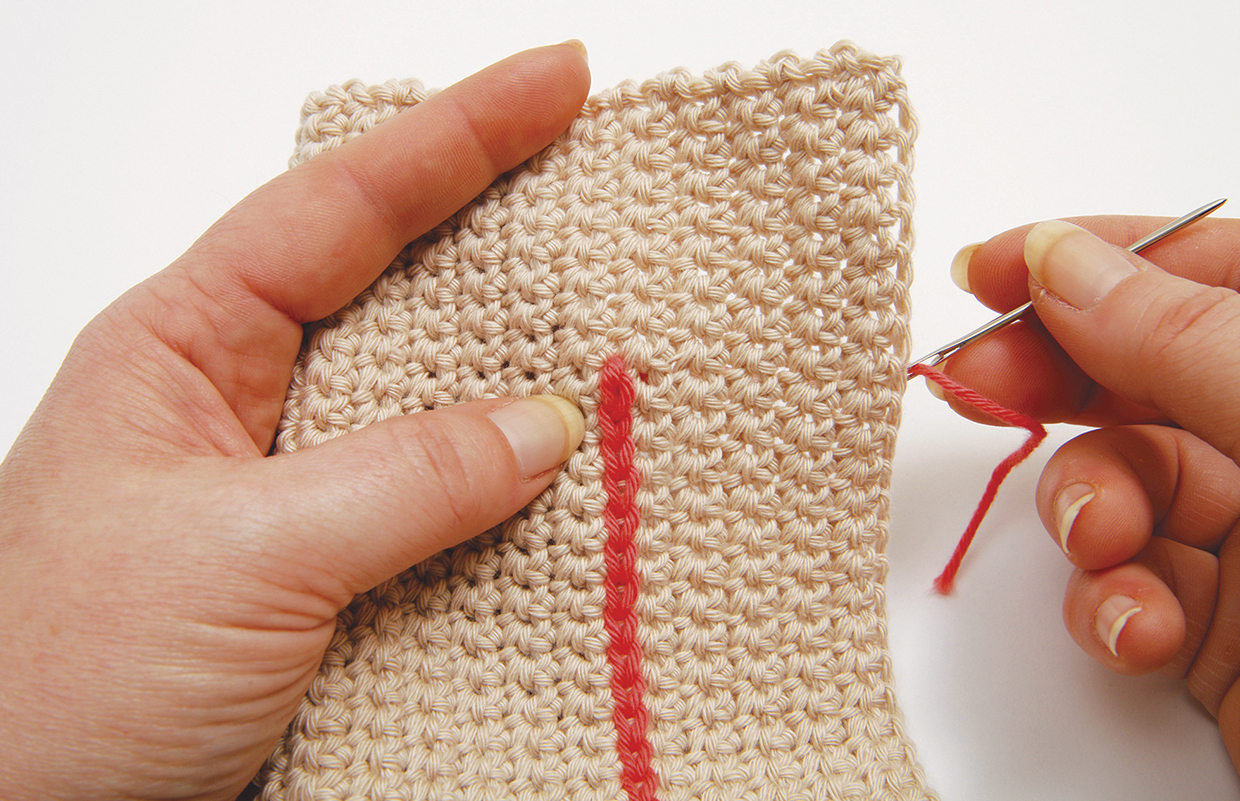
How to surface crochet circles
Step 1
If you’re working a circle or any outlined design that ends in the same place as it begins, the technique is the same, but you’ll need to finish off your line in a different way to create a neater look.
So start off your line in the same way as before...
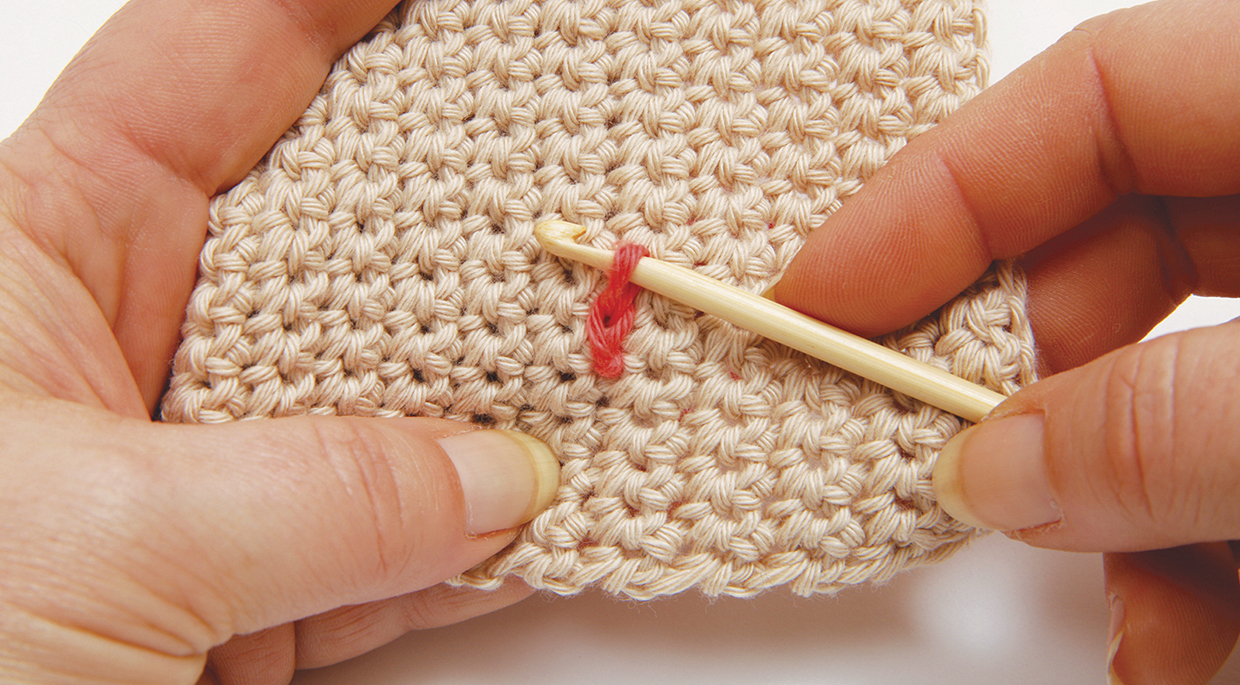
Step 2
...then work your stitches diagonally, horizontally and vertically to create your design.
Work your design up until the penultimate stitch (the one before the last stitch). Cut the yarn, leaving a tail around 15cm long. Thread the tail onto a tapestry needle and bring the needle up to the front of the fabric at the point where you want your last stitch to start. Pass the needle and yarn through the penultimate loop and remove it from the hook as you do so.
Now insert the needle underneath the first stitch of the design, from right to left...
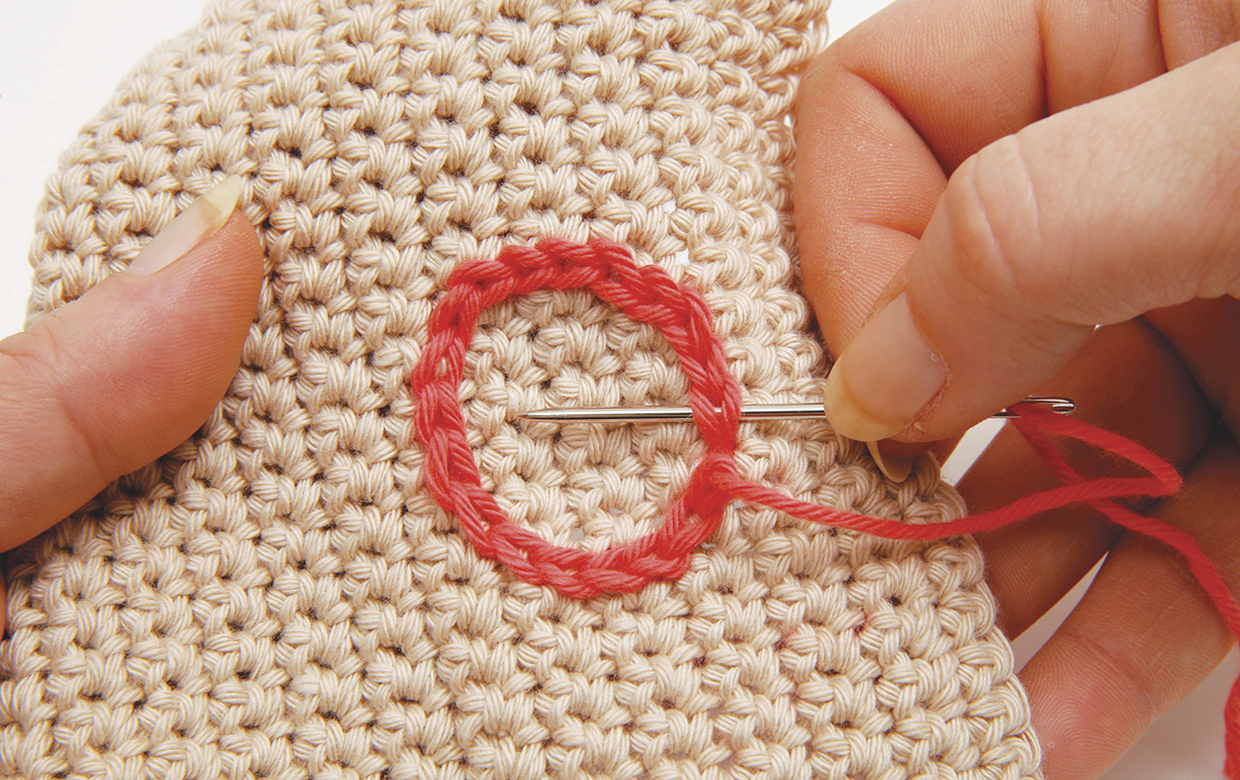
Step 3
...Then push the needle back into the penultimate loop and into the fabric at the same point as the yarn came out.
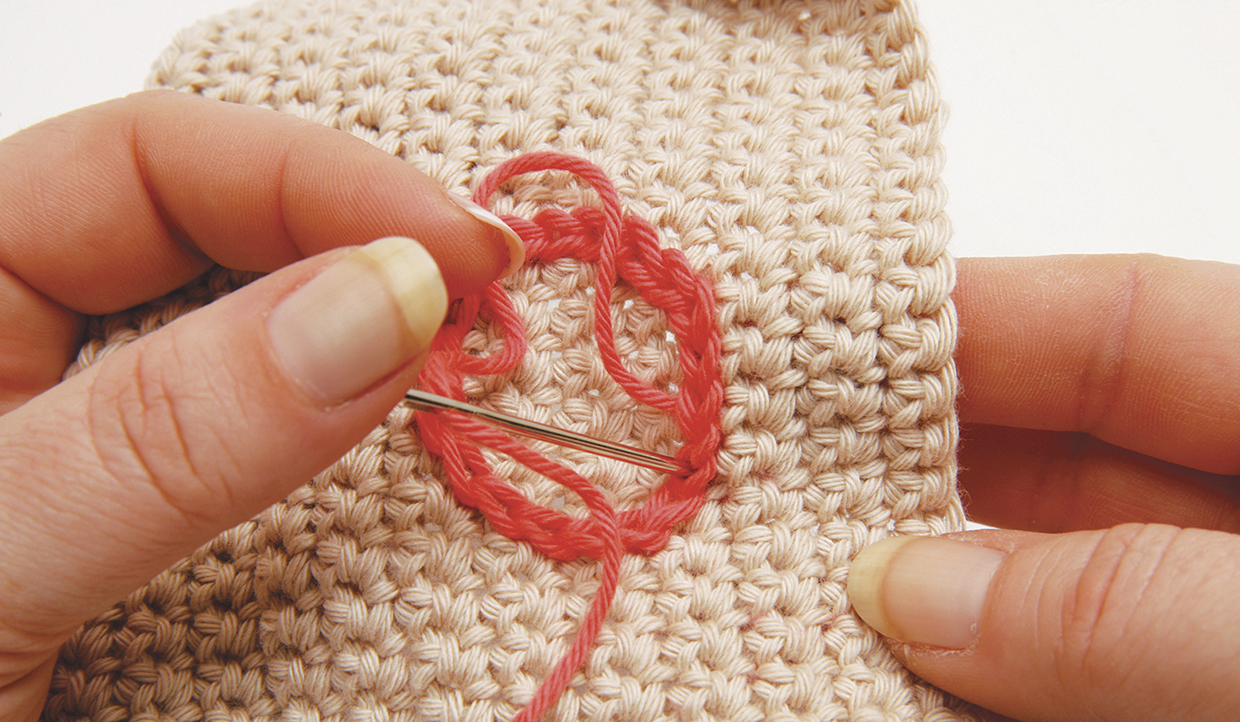
Step 4
Pull gently to make sure the final loop lies neat and flat.
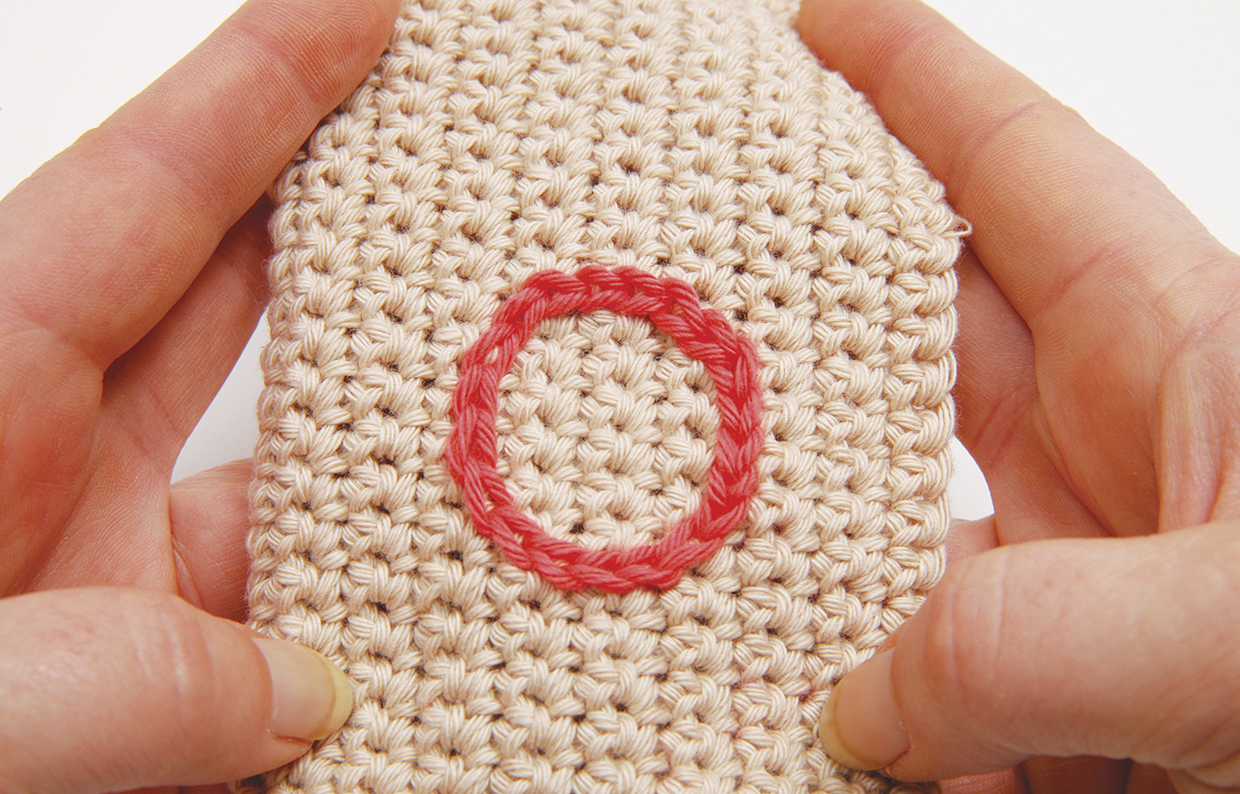
Securely and neatly weave in this tail end, and the starting tail, on the back of the fabric. You’ll be left with a circle or other design that has no obvious start or end point. Magic!













